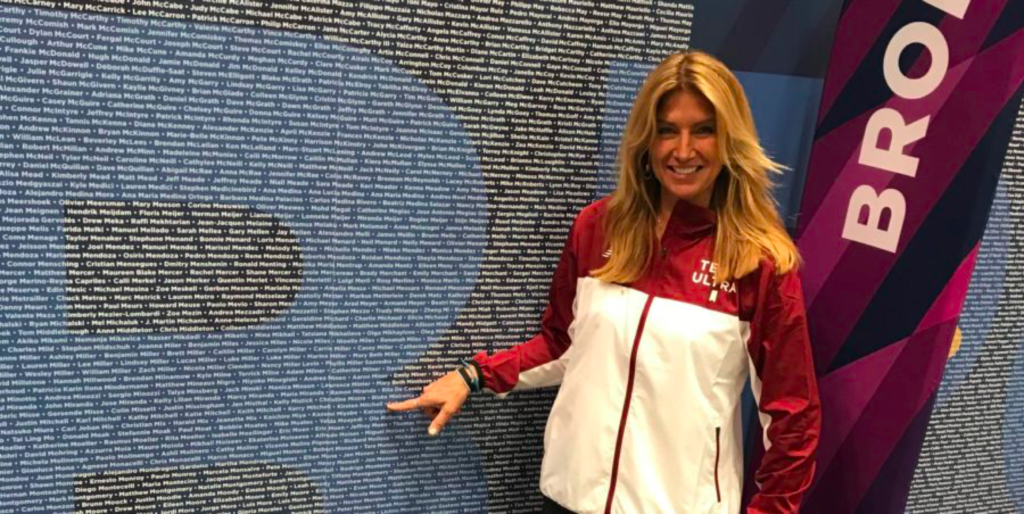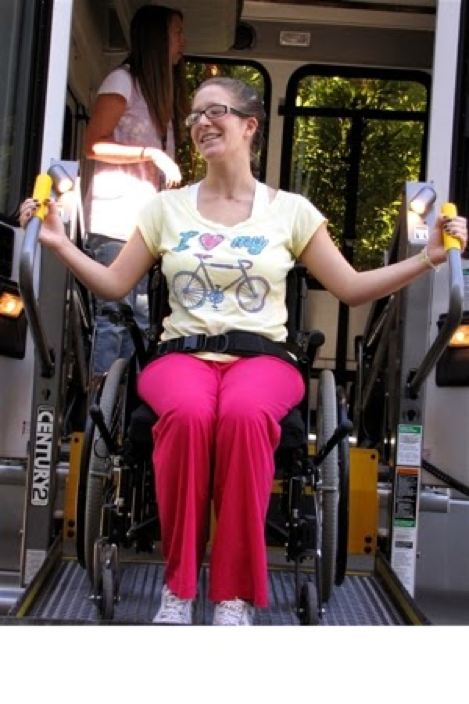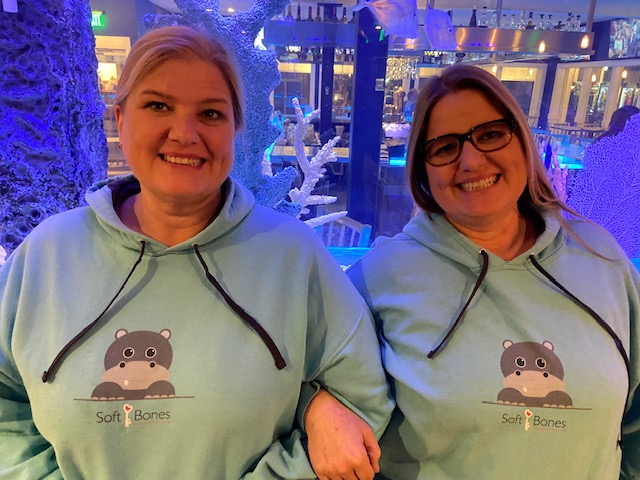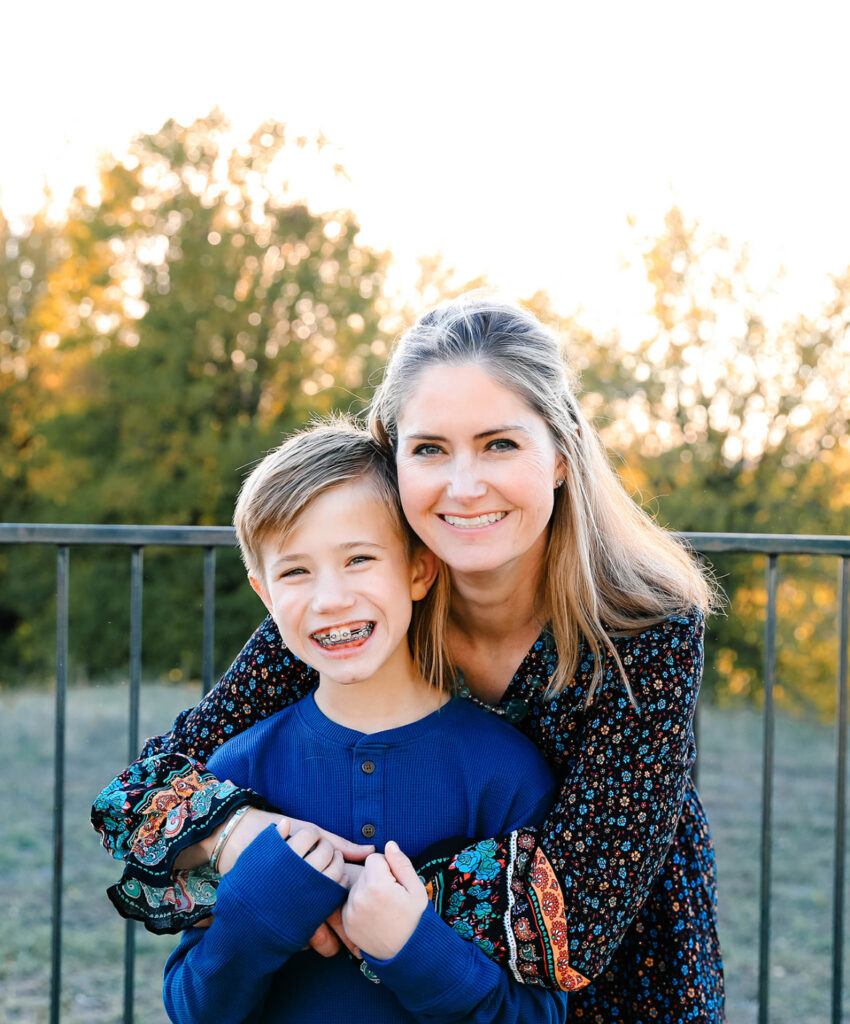Living with HPP- Kirsten

Two years ago, at the age of 49, I was diagnosed with hypophosphatasia. Married to my high school sweetheart and with two grown sons, nothing seemed to shout out that I had this metabolic bone disorder. I had pneumonia as a baby, lots of cavities, broken bones that were earned, and growing pains as a youth, but we just didn’t put the pieces of the puzzle together.
Prior to being diagnosed, I was a teacher and an avid runner, competing in many races and completing several half and full marathons. My first sign was a metatarsal and cuneiform fracture in my left foot. After working diligently with my sports physical therapist to strengthen muscles, I safely returned to run. But just 5 months later, my leg started hurting badly and an MRI was ordered and it was discovered that I had a stress fracture in my femur with a small cortical fracture line. This was obviously not normal and raised suspicion in my local sports medicine doctor and my physical therapist that something more serious was amiss. Labs were done but nothing appeared that seemed to show alarm or cause. So, I recovered, strength trained, continued doing PT, and began yet another return to run program to safely bring me back. A few months later, I injured again. My sports med doctor then referred me to a sports running specialist/orthopedist at a major university that was nationally recognized. It was discovered that I had a first metatarsal stress fracture that was close to displacing. Just 2 months later, my right heel fractured and then a few months after that, I hurt a rib doing a pull up. Then, when my 2nd and 3rd metatarsal fracture occurred, I grew more than a little frustrated and despondent over this and really wanted/needed some answers.
The journey to this discovery was a very frustrating time in my life because I truly tried to follow the advice given, and yet was still fracturing. I was also beginning to have fatigue, bone pain and other symptoms associated with hypophosphatasia in adults. My doctors were amazing and had run every lab imaginable. I think that they and others thought that I maybe wasn’t being compliant, that my nutrition wasn’t good, that it was mechanical/my running gait might be off, that it was stress related, etc. Every effort was made to correct this. I rested, ate well, I had several running gait analyses done, tried different shoes, watched my nutrition, worked hard at doing my PT exercises, even meditated, and yet to no avail. Fed up, I started pouring through my medical records/labs and researching any figure that was slightly off. I came across consistently low alp numbers and when I looked that up along with stress fractures, I found a bone disorder called hypophosphatasia and references to this Soft Bones group! What a find! The characteristics of HPP described myself and one of my son’s almost perfectly. This was my ‘aha’ moment. Since it’s very rare, I was a little hesitant to mention it to my doctors. They ran the labs and the markers for hypophosphatasia were indeed present. There was still a hesitancy to diagnose – since it is ultra-rare and I had no known family history. With some additional information, a genetic test was ordered. A mutation was found, and hypophosphatasia was then formally diagnosed and confirmed with both labs and genetic testing.
My advice to others is to be persistent and to connect with others in the Soft Bones community. First and foremost, advocate for yourself and your family. This can always be done in a nice and respectful way. If something doesn’t make sense/feel right, find the cause. Don’t be afraid to pursue a diagnosis or treatment for yourself and your family. Do the research yourself, so you are informed. Ask others for their experiences. There is a wealth of information in the Soft Bones community. I was very concerned for my two boys, and the knowledge I gained from this group is what gave me the confidence to push and be firm in asking for genetic testing. Since the diagnosis, we have discovered that my father and one of my sons has the mutation, as well. They are both asymptomatic, thank goodness, but we are armed with the knowledge of what to do and treatment options if HPP presents later.
Although I have continued to fracture every few months, my goal is to show others that you can continue to be active with this disease, in your own individual way. Instead of running long distances, I now swim, cycle and row. I do sometimes sneak a run in every now and again, for old times sakes, even though running is no longer advised. I head to the gym to make my body as strong as it can be and make sure to do my physical therapy exercises year-round. Even though I get discouraged at times and have limitations now, I am always trying to find new ways to work around them. I want my boys to see this. It’s important to me. I don’t want to give up or in for as long as I am able. I want to keep my body as strong as I can. This, of course, will be a continuing process for me, as I’m still discovering what works for my body and what doesn’t as this disease progresses.
My hope in sharing my story is that it will bring more awareness to the different presentations in hypophosphatasia and that people find comfort in this wonderful support group that we have here at Soft Bones. Our presentations are all so different, but we all suffer at times, rejoice and share in the same goal… That one day, we will find a better way to manage this disease for our children and ourselves, and perhaps even find that cure for HPP.








Responses